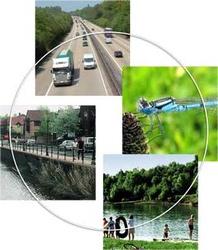Among the most important tasks of the 21st century is the issue of environmental protection. The emergence and support of the environmental crisis is facilitated by the pollution of irreplaceable natural resources - soil, air and water - by introducing industrial waste, agricultural production, and the transportation network.
Emissions of industrial-scale enterprises and transport systems (for which environmental impact assessment was not carried out) to air, water bodies and soils have reached unacceptable sizes today. In a number of areas, for example, in large industrial centers, the degree of pollution significantly exceeds sanitary standards. The primary role in the processes of environmental pollution is played by the activities of enterprises in the chemical and fuel industry, metallurgical complex, and electricity.
We give an example. The vast majority of modern plants produce toxic waste liquid consistency, which cannot be satisfactorily cleaned, and as a result, their long-term isolation is required until their natural decay or decomposition. Such pollutants are placed in storage ponds and similar structures, it is almost impossible to ensure their complete isolation. As a result, such structures automatically become sources of penetration of substances into surface or underground drinking aquifers. An environmental impact assessment is mandatory for the aforementioned enterprises.

Environmental Impact Assessment (EIA) consists of methods and procedures for taking into account the environmental requirements of current legislation in the system of preliminary preparation of economic, design and other decisions. They are aimed at preventing and identifying the consequences of their implementation harmful to nature and society in the planes of ecology, social institutions, and the economy. Environmental impact assessment aims to determine the assessment of investment costs for environmental measures.
The preparation of an EIA must necessarily be built on existing systems of official state standards for environmental protection (GOST 17.1 to 17.8), adopted standards that determine the quality of the environment, including construction and sanitary.
Environmental impact assessment is a multilateral interdisciplinary work that reflects knowledge from a number of branches of science. It is based on facts and information about the state of nature, about the effect of the designed object on it. During the preparation of the EIA, exclusively experienced specialists are invited as performers who are fluent in the techniques in the field of knowledge they represent. On their account should be significant developments and materials on the required region for the construction of a pre-planned facility.

The meaning of assessing the impact of facilities on the environment is to prevent the possibility of environmental degradation under the influence of possible economic activity, to ensure the environmental stability of the area where the facility is located, and to create normal living conditions for the population. It should precede the planned decision on financial investments in the implementation of the project. In a word, environmental impact assessment is defined as an applied area of natural science in combination with socio-ecological practice.